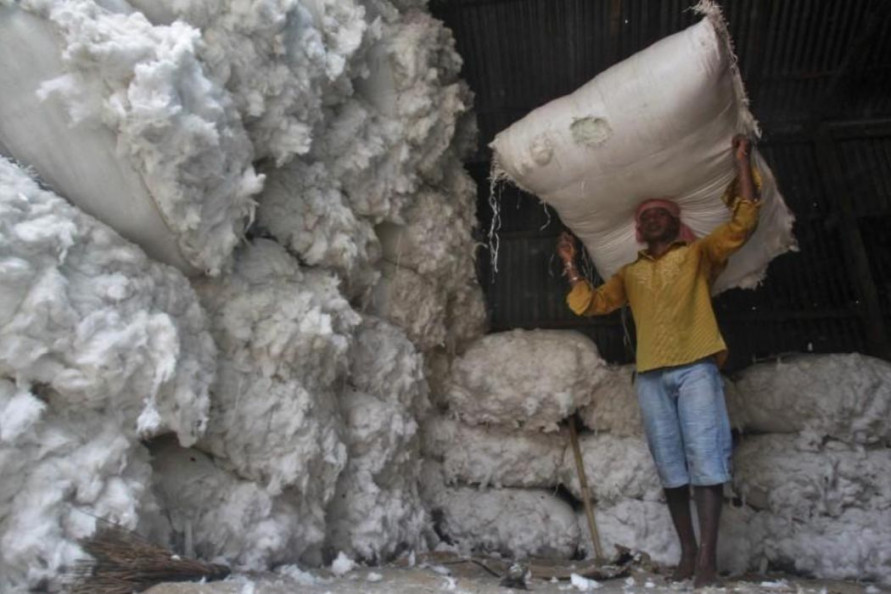Cotton Corporation of India has raised its base selling price of reserved cotton on Aug 11 and Aug 14, and according to Cotlook, by Aug 25, CCI has sold about 1.04 million tons of cotton. With the good sales of reserved cotton, and continual upswing of base selling price, the sales of cotton stocks of CCI, which originally put pressure on the international cotton market, have gradually turned to be a support point, but many Indian reserved cotton have been bought by international cotton merchants, still increasing the market supply. For the Chinese cotton market, in 2020, only 894kt of cotton quotas under 1% is allocated, and with the limited quotas, though there is certain impact of Indian cotton on domestic spot cotton, the direct pressure is small.
The reserved cotton sales of CCI:
As of Aug 25, according to Cotlook, CCI had sold about 1.04 million tons of cotton, and the remaining stocks in CCI and Maharashtra Cotton Federation are estimated at about 1.22 million tons. CCI raised the base selling price of reserved cotton on Aug 11 and Aug 14: on Aug 11, the prices of 2018/19 cotton have increased by an average of Rs.100/candy from the beginning of Aug, and the 2019/20 cotton price increased by an average of Rs. 300/candy. On Aug 14, CCI announced the latest discounts and prices of cotton stocks during Aug 16 and Aug 31. The 2018/19 cotton prices have been raised by an average of Rs. 100/candy, and 2019/20 cotton prices increased by Rs. 100-200/candy. CCI also began to suspend daily sales from Aug 25 to deal with outstanding sales.
With the good sales of CCI's cotton sales and continual upswing of prices, the sales of Indian cotton turn to be a support to the global market. Moreover, the good sales also support the CCI's new cotton procurement in new season.
| CCI transactions of cotton stocks | |||
| Unit: KT | Maharashtra Cotton Federation | CCI stocks | |
| 2018/19 | 2019/20 | ||
| sub-total | 310.0 | 1955 | |
| Total stocks | 2265.0 | ||
| Transaction time | Transaction volumes | ||
| by 2020/8/7 | 497.0 | ||
| 2020/8/7-2020/8/14 | 30.0 | ||
| 2020/8/14-2020/8/19 | 207.0 | ||
| 2020/8/19/2020/8/25 | 308.0 | ||
| Total transaction volumes | 1042.0 | ||
| Proportion in stocks | 46.0% | ||
| Stocks left | 1223.0 | ||
(Remarks: The source of the data in the above table is from Cotlook. Since the CCI does not announce the transaction and inventory data, the data may be slightly different among different sources.)
According to Indian cotton exports by May, 2020, in 2019/20 season, Indian cotton exports to Bangladesh accounted for a larger share of around 61%. According to previous reports, India is formulating a memorandum of understanding, planning to export 1.5-2 million bales of cotton (about 250,000-350,000 tons) to Bangladesh, and the CCI will also establish its own warehouse in Vietnam to promote cotton exports. Bangladesh and Vietnam are the potential consumers of Indian cotton.

The impact of competitive Indian cotton on domestic spot cotton:
According to data from the Ministry of Commerce of India, India exported 27,000 tons of cotton in May 2020, an increase of 368% month-on-month and 14% year-on-year. From Jan to May of 2020, the total export volume was 351,300 tons, a year-on-year decrease of 10%, and during the international crop year of 2019/20 season, export volumes amounted to 558,000 tons, a year-on-year decrease of 25%. The transactions of CCI were mainly concentrated in Aug, and most of them were purchased by international cotton merchants. Currently, the Indian cotton shipments to China are mostly in Sep and Oct. In 2020, China only allocated 874kt of cotton quotas under 1% tariff, and on Sep 1, China announced to allocate 400kt of sliding-scale duty quotas, all for imports by processing trade quotas. For Sep/Oct shipment, Indian cotton is mostly offered at 67-68cent/lb, equivalent to about 13,500-13,600yuan/mt under sliding-scale duty. In addition, the quality of Brazilian cotton is relatively good, while Indian cotton quality is inferior. Indian cotton sales will be stimulated only with larger price spread. Therefore, although the low-priced Indian cotton has a certain impact on the domestic cotton, the direct pressure brought by it is relatively small. Since cotton yarn import does not require quotas, the pressure on the domestic cotton textile market may be mainly from imported Indian yarn.





